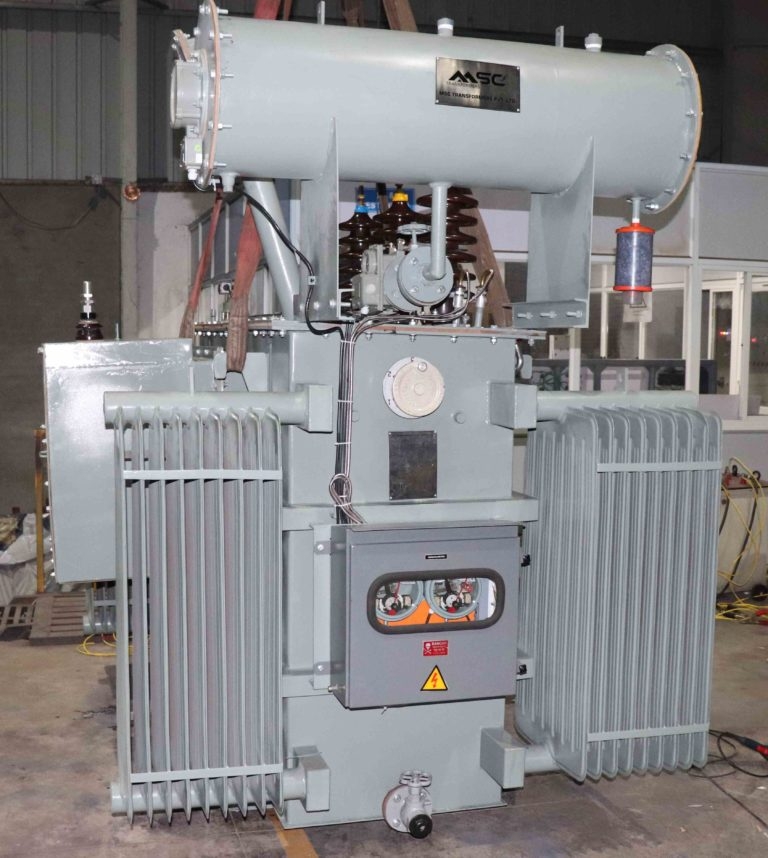Understanding Transformers: Types, Applications, and Their Importance in Power Systems

INTRODUCTION
Distribution Transformers play an integral role in modern power systems, enabling the efficient transmission and distribution of electrical energy across vast distances. Electrical devices transfer electrical energy between two or more circuits through electromagnetic induction. This article delves into the fundamental concept of transformers and elaborates on various types, including distribution transformers, power transformers, 3-phase transformers, and furnace transformers.
What is a Transformer?
A transformer is a static electrical device that changes the voltage level of alternating current (AC) in a power system. It consists primarily of two or more coils of wire wound around a magnetic core. The primary coil receives the AC voltage, and through electromagnetic induction, it induces a voltage in the secondary coil. The voltage can be stepped up (increased) or stepped down (decreased) depending on the application requirements.
Transformers are used in a multitude of applications ranging from electric power generation and distribution to industrial machinery and consumer electronics. The main purpose of a transformer is to ensure that electrical energy is delivered safely, efficiently, and at the correct voltage level to end-users.
Distribution Transformers
Distribution transformers are a critical component of the electrical distribution network. They are typically located near the end-users and are responsible for stepping down the voltage from the high-voltage transmission lines to a level suitable for residential, commercial, and small-scale industrial consumption.
Key Characteristics:
-
Voltage Range: Usually operates below 33 kV.
-
Power Rating: Typically less than 200 kVA.
-
Installation: Mounted on poles, pads, or underground vaults.
-
Cooling Methods: Natural air or oil-cooled systems are commonly used.
Applications:
-
Supplying electricity to homes, schools, offices, and small businesses.
-
Used in both urban and rural distribution networks.
Advantages:
-
Compact and easy to install.
-
Low maintenance requirements.
-
Efficient for short-distance power distribution.
Power Transformers
Power transformers are designed to handle high voltage and current levels and are used in transmission networks. These transformers are responsible for stepping up the voltage for transmission and stepping it down for sub-transmission or distribution.
Key Characteristics:
-
Voltage Range: Operates above 33 kV.
-
Power Rating: Usually above 200 kVA.
-
Efficiency: High efficiency, especially at full load.
-
Cooling Methods: Oil-immersed, air blast, or water-cooled systems.
Applications:
-
Used in power generation stations and transmission substations.
-
Integral in long-distance power transmission.
Advantages:
-
Capable of handling large power loads.
-
Minimizes power losses during transmission.
-
Provides voltage regulation and system stability.
3-Phase Transformers
A 3-phase transformer is a type of transformer that works with a three-phase electrical system, which is commonly used in power generation and industrial applications. Instead of using three separate single-phase transformers, a 3-phase transformer integrates all three phases into a single device.
Key Characteristics:
-
Configuration: It can be connected in Delta-Delta, Delta-Wye, or Wye-Wye configurations.
-
Efficiency: Generally more efficient than a group of single-phase transformers.
-
Design: Compact and cost-effective for large-scale operations.
Applications:
-
Power generation and transmission systems.
-
Industrial plants and manufacturing units.
-
High-power motors and electrical drives.
Advantages:
-
Lower installation and maintenance costs.
-
Better load balancing.
-
Space-saving design.
Furnace Transformers
Furnace transformers are special-purpose transformers used to power electric furnaces for melting metals and other high-temperature industrial processes. These transformers are designed to withstand heavy load fluctuations and provide the necessary voltage levels for furnace operation.
Key Characteristics:
-
Robust Construction: Designed to handle high currents and short circuits.
-
Voltage Range: Customized based on furnace requirements.
-
Cooling: Often requires forced cooling systems due to high thermal stress.
Applications:
-
Electric arc furnaces (EAF) in steel plants.
-
Induction furnaces for metal casting.
-
Glass and ceramics industries.
Advantages:
-
Provides stable and controlled power supply to furnaces.
-
Designed for high durability and thermal performance.
-
Customizable for specific industrial applications.
The Importance of Transformers in Power Systems
Transformers are indispensable in ensuring the reliability and efficiency of electrical power systems. Their ability to modify voltage levels enables the safe and economic transmission of power over long distances. By minimizing energy losses and facilitating voltage control, transformers contribute significantly to the stability and sustainability of electrical grids.
Key Benefits:
-
Energy Efficiency: Reduces losses in transmission and distribution.
-
Voltage Adaptation: Enables the use of electricity across various devices and systems.
-
Safety: Helps isolate different sections of the power network, enhancing safety.
-
Flexibility: Allows for expansion and modernization of power infrastructure.
Conclusion
From homes and factories to power stations and industrial complexes, transformers are the unsung heroes that keep our world powered. Each type of transformer—whether distribution, power, 3-phase, or furnace—has a specific role to play in the energy ecosystem. Understanding these differences is key to appreciating the complexity and sophistication of modern power systems. As energy demands continue to rise and technology evolves, the role of transformers will remain pivotal in shaping a resilient and efficient electrical future.
- Art
- Causes
- Crafts
- Dance
- Drinks
- Film
- Fitness
- Food
- Jocuri
- Gardening
- Health
- Home
- Literature
- Music
- Networking
- Alte
- Party
- Religion
- Shopping
- Sports
- Theater
- Wellness


